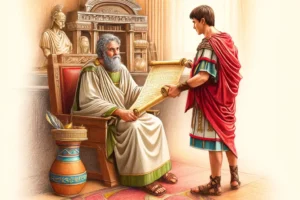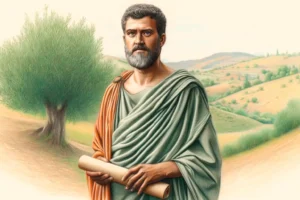
Lazarus: Raised from the Dead by Jesus
Lazarus, a close friend of Jesus, is famously known for being raised from the dead by Jesus. His resurrection is one of the most powerful miracles in the New Testament, showcasing Jesus’ divine authority over life and death.
Quick Facts
- Resident of Bethany: Lazarus lived in the village of Bethany with his sisters, Mary and Martha.
- Close Friend of Jesus: Lazarus and his sisters were close friends of Jesus.
- Illness and Death: Lazarus fell seriously ill, prompting his sisters to send for Jesus.
- Delayed Arrival: Jesus intentionally delayed His visit, arriving four days after Lazarus had died.
- Profound Grief: Both Mary and Martha expressed deep grief and questioned why Jesus had not come sooner.
- Resurrection: Jesus commanded Lazarus to come out of the tomb, and he was miraculously raised from the dead.
- Impact on Believers: This miracle strengthened the faith of many and showcased Jesus’ power over death.
Historical and Cultural Context
Lazarus’s story is found in the Gospel of John, specifically in John 11. Bethany, the village where Lazarus lived with his sisters Mary and Martha, is located near Jerusalem. The family was well-known and respected in their community, which is evident from the number of people who came to mourn Lazarus’s death.
Illness and Jesus’ Delay
When Lazarus fell ill, Mary and Martha sent word to Jesus, hoping He would come and heal their brother (John 11:3). Surprisingly, Jesus chose to stay where He was for two more days, explaining to His disciples that Lazarus’s illness would ultimately glorify God (John 11:4-6). This delay set the stage for a greater demonstration of His power.
Arrival in Bethany
By the time Jesus arrived in Bethany, Lazarus had been in the tomb for four days (John 11:17). In Jewish belief, the soul was thought to remain near the body for three days after death, but by the fourth day, decomposition was believed to set in, making Jesus’ miracle even more astounding.
Grief and Faith
Upon His arrival, both Martha and Mary confronted Jesus with their sorrow and faith. Martha expressed her belief in Jesus’ power, saying, “Lord, if you had been here, my brother would not have died. But I know that even now God will give you whatever you ask” (John 11:21-22). Jesus responded by declaring, “I am the resurrection and the life. The one who believes in me will live, even though they die” (John 11:25-26). Mary, too, echoed Martha’s sentiment of sorrow and faith when she met Jesus (John 11:32).
Jesus’ Compassion and Power
Moved by the weeping of Mary and the mourners, Jesus was deeply troubled and wept (John 11:33-35). His tears showed His deep compassion and humanity. Approaching the tomb, Jesus prayed to the Father, thanking Him for hearing Him, to show the crowd that He was sent by God (John 11:41-42). Jesus then commanded, “Lazarus, come out!” (John 11:43). Lazarus emerged from the tomb, still wrapped in burial clothes, alive and restored (John 11:44).
Impact and Significance
The resurrection of Lazarus had a profound impact on those who witnessed it. Many believed in Jesus as a result of this miracle (John 11:45). However, it also intensified the hostility of the religious leaders, who saw Jesus as a threat to their authority and began to plot His death (John 11:53).
Theological Themes
Lazarus’s resurrection underscores several key theological themes:
- Jesus’ Authority Over Death: This miracle powerfully demonstrates Jesus’ authority over life and death, reinforcing His identity as the Son of God.
- Faith in Jesus: The event emphasizes the importance of faith in Jesus, who is the source of resurrection and eternal life.
- Humanity and Compassion of Jesus: Jesus’ weeping shows His deep empathy and shared humanity, highlighting that He is moved by human suffering.
- Foreshadowing Jesus’ Own Resurrection: Lazarus’s resurrection prefigures Jesus’ own resurrection, offering a glimpse of the hope and victory over death that He provides.
Legacy and Impact
Lazarus’s resurrection remains one of the most compelling miracles in the New Testament, frequently referenced in Christian teachings about Jesus’ power and compassion. The event is commemorated in various Christian traditions, especially during Lent and Holy Week, as a testament to Jesus’ life-giving power and a precursor to His own resurrection.
Conclusion
Lazarus, raised from the dead by Jesus after four days in the tomb, stands as a powerful testimony to Jesus’ divine authority and compassion. His resurrection strengthened the faith of many and foreshadowed the ultimate victory over death through Jesus’ own resurrection.
Tag:Authority, Belief, Bethany, Compassion, death, divine power, Eternal Life, Faith, Grief, Holy Week, Jesus, Lazarus, Mary and Martha, Miracle, New Testament, resurrection, tomb



